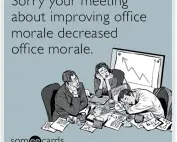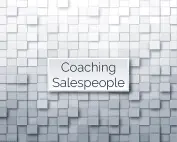Sales and selling: Learn the basics
The art of sales has become much more sophisticated than it was before the internet turned everyone into discriminating buyers. Potential customers now have access to product and service reviews, competitive information, and pricing from around the globe. However, despite the ways tech and data have changed the game, strong sales fundamentals remain the secret to growing your business.
0 1
How to be a Successful Salesperson
Why are some people on a sales team more successful than others? A good salesperson relays enthusiasm for their offering to potential customers. Throughout the prospecting and sales processes, top salespeople pay close attention to their prospect’s needs and consider whether their value proposition is a good fit. They know their product and are confident when overcoming objections. They can also dust themselves off and try again when they are rejected.
Sales is actually a very people centric business requiring high levels of empathy and understanding of your current or potential customer. It also requires great discipline in terms of researching, managing and note keeping on the latest of CRM systems. It also requires a high level of commercial and business acumen to ensure that any agreement you are about to enter into does not end up costing your organisation money with low margin, high maintenance clients. Some of the other critical skills and characteristics you’ll need.
- Modesty: Be honest and confident, but put your ego aside.
- Integrity: Always sell the right thing to the right person for the right price.
- Reliability: Be punctual, responsive, and always ready to perform.
- Drive: Have goals and the persistence to succeed.
- Curiosity & innovation: Always be learning and always consider new ways to address customer pain points.
- Mental Fortitude: Be self-motivated even when people tell you ‘no.’ Maintain your prospecting efforts and keep looking for qualified leads.
- Competence: Know what you’re selling and know how to move customers through the sales funnel.
In the modern online world, sales and marketing outfits will have sophisticated lead generation and scoring mechanisms so that by the time you are working with a prospect, you should have a good sense of their intent, willingness and ability to buy. Sales should not be like a scene from the 80’s movie Glengarry Glen Ross.
Key Sales Terms Top Performers Already Know
B2B Sales: Business 2 Business describes a transactional relationship between a provider and client where both the provider and client are businesses.
B2C: Business 2 Consumer is the transactional relationship between a business and an individual consumer.
Buying Criteria: All the information a consumer needs to make a buying decision.
Conversion Rate: Percentage of people who complete the desired action on a single web page, such as filling out a form.
Customer Relationship Management (CRM): Software and business processes companies use to track customer and prospect interactions.
Decision-Maker: The person who makes the final decision of a sale.
Feature: A product’s distinguishing characteristic that helps boost appeal to consumers.
Forecasting: Estimating future sales performance for a period based on historical data.
Gatekeeper: A person who enables or prevents information from getting to other people, usually decision-makers or influencers.
Lead: A person or company who’s shown interest in a product or service and is considered a possible sales prospect.
Objection: A prospect’s challenge to a product or service’s benefits. Almost every sale will involve overcoming objections.
Pipeline: A report of all possible and incoming sales, usually divided into stages for each step in the sales process
Prospecting: The process of seeking and finding potential buyers.
Quota: The assigned sales goal a sales rep is expected to meet over a given time frame.
Sales Funnel: The customer journey from prospect to purchase, including stages known as the top, middle, and bottom of the funnel.
Service Level Agreement (SLA): An agreement that defines the level of service a customer should expect from a vendor.
Stage: Phases of the sales pipeline representing each step in the sales process.
Up-Selling: When a sales rep persuades a customer to purchase a higher-end version of the product they own or are considering purchasing.
Value Proposition (Value prop): A benefit of a product or company intended to differentiate its value from competitors.
“A goal properly set is a goal halfway reached.” – Zig Ziglar
0 2
How to Turn a Discovery Meeting into a Persuasive Sales Pitch
For the sales professional, the discovery meeting is the first step in your journey to the sale. It can be in-person or it might happen on a phone call or more sol Zoom these days. The Discovery Phase is where you uncover whether the potential customer’s needs match your product or service.
Be empathetic and put yourself in the prospect’s shoes. Understand their needs and most importantly their business pains. The better you understand their business and their pain points, the more likely you are to find possible solutions for them.
For more information about bolstering your listening skills, take a look at our course on Emotional Intelligence.
Discovery meetings are for listening and uncovering a prospect’s real business challenges. Often potential customers will think they need one solution when they need another. If you listen and demonstrate a competent knowledge of both their needs and your product, you can move the sales process forward to the sales pitch.
An effective sales pitch lays out in clear terms what a prospect’s business challenge is and how your product or service addresses it.
Here are the key components of a successful pitch as described by Entrepreneur.com:
- An attention-grabbing introduction: You must remember you are trying to convince the other party to work with you. Maintain their attention by getting off to a strong start.
- A clear vision of a world with your company: What does working with you or your company look like? Your job is to show the “new world” to the prospect, all the benefits you will bring, and what you will achieve together.
- A solid plan to achieve your vision: Words are nothing without a real plan. The prospect should believe in your proposed solution. You can achieve this with an effective plan and presentation of your plan.
- Stage Presence: Be prepared and engaging. You want to be memorable, so train your voice. Perfect your carriage, confidence, and projection, but don’t sound too scripted. The more competent you sound, the more confidence they will place in you.
Selling is easier than you think
“Integrity is what we do, what we say and what we say we do.” – Don Galer
0 3
How to Overcome Objections and Close the Deal
When a prospect pushes back, don’t get discouraged. You can use an objection as a tool for closing the deal by addressing it head-on, turning it around, and showing how the potential customer’s hesitations can be eased.
Below are five things to remember when handling objections.
- Expect them: Be prepared – When it comes to sales objections, it’s important to expect them. When your prospect expresses objections, listen to and understand them.
- Welcome them: Objections are an opportunity for you to give further insight into why you or your product are the right choices.
- Affirm them: Demonstrate you understand their objection by echoing or rephrasing it into a question. “So, the price of the product is the problem here?”
- Offer complete answers: Provide specific and well-thought-out answers to the objections. It’s okay to pause before providing an answer. Customers appreciate thoughtful responses. Include statistics, supporting data, and relevant past experiences in your reply.
- Have alternative solutions: Customer objections may be correct, so be prepared to offer alternative solutions.
If you’ve asked probing questions, understand the prospect’s pain points, and overcame objections, it’s time to close the deal.
To get the sale across the finish line, there are several kinds of closing questions you can ask.
- Be direct: ‘Are you ready to move forward today?’
- Look for missed objections: ‘Is there any reason you wouldn’t do business with us today?’
- Ask for their opinion: ‘This seems like a great fit. Don’t you think?’
- Ask a time sensitive question: ‘You said this needs to be done by Q3. Shouldn’t we get started if we’re going to make that deadline?’
- Be consultative: ‘Would you like my help?’
- Be polite: ‘I know you’re busy today. Should we go ahead and discuss pricing and agreements?’
These are some of the basic tools every successful salesperson has in their toolbox. No matter what you’re selling, understanding customer needs, conveying confidence, and turning objections into reasons for buying are the building blocks for converting opportunities into deals.
Common Questions
The way you prospect depends upon what type of product or service you offer and where your customers are at. Here are five of the most common types of prospecting:
- Inbound Marketing — has become the most popular way to attract customers because it’s non-intrusive and prospects come to you attracted by the valuable content and tailored experiences you provide to them.
- Social Media Outreach — Using Facebook, Twitter, TikTok, Instagram, Linked In, and other social platforms to attract and engage potential customers.
- Referrals — Referrals are one of the easiest ways to grow sales by asking happy customers for introductions and recommendations.
- Networking — A preferred form of prospecting because it does not feel salesy. It feels warmer because prospects get to know you and build trust before entering a sales funnel.
- Outbound Prospecting — Any kind of marketing where you initiate the conversation with your audience. This can include TV and radio ads, telemarketing, banner and display ads, billboards, print ads, cold calling, and pop-ups.
According to Dave Warawa, author and sales expert, the top 7 Sales Mistakes Are:
- Talking too much. Listen more.
- Not following up. What’s the next step?
- Taking rejection personally. Grow a thick skin.
- Looking for shortcuts. Sales fundamentals still apply.
- Focusing on price. What is driving the buyer’s decision?
- Dealing with the wrong people. Are you talking to THE decision-maker?
- Making assumptions. Listen. Echo back to the prospect what you’ve heard. Don’t assume you know anything they don’t tell you.
This is one of our executive briefings taken from our series of professional online business short courses from ELL. We have over 150 courses online with over 1,000 hours of e-learning covering a wide range of topics across leadership, management and personal & professional development created by industry experts and learning professionals.
Sales Fundamental Course
Selling in the current day has turned into a complex process. With customers more savvy and able to access more information than ever before, a sales process and cycle is as much a buyer cycle. As well as being compelling to the market as a whole, being known and being credible, the buyer has to be taken on the journey to purchase and by the time they reach you, they may be more sophisticated about your products – and your rivals – than you think. This Sales Fundamentals course will show you the basic sales process and proven tools that can be used, no matter what the size of the sale. You will learn to be more confident, handle objections and close a deal. With our course you will learn:
- How to find clients, approach and pitch to them
- How to handle objections and close a deal
- How use use CRM and other sales tools
- Know all the major sales approaches















